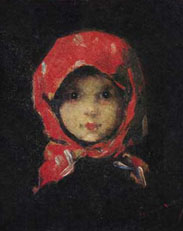La firme japonaise Tobu Recordings m'a passé la commande d'une notice pour accompagner l'édition de CD consacrés au chef George Georgescu. Ci-dessous, voici l'article que j'ai rédigé pour accompagner cette publication des deux dernières symphonies de Franz Schubert.
 |
| http://www.tobu-trading.com/shinpu-elect11.html |
A l’instar de Ludwig van Beethoven, mais en suivant d’autres principes que son contemporain, Franz Schubert (1797 – 1828) ouvre le genre de la Symphonie à de nouveaux horizons. Ce maître du lied transcende la grande forme orchestrale en lui offrant toute l’expressivité de son art mélodique. Avec lui, la Symphonie devient chant et peut exprimer une profondeur lyrique jusqu’alors inouïe. Un autre aspect peut-être plus méconnu de l’art schubertien est l’adoption de musiques populaires, non pas citées à des fins folkloriques ou anecdotiques, mais pour ainsi dire incorporées dans l’essence même de son processus créateur.
Cette alliance novatrice octroie aux œuvres orchestrales de Schubert une remarquable vérité de sentiments. Ses dernières Symphonies en particulier ne ressemblent à rien d’autre qui fût écrit à la même époque. Cela explique sans doute en partie pourquoi ces pages mirent tant de temps à s’imposer, bien des années après la mort du compositeur. L’on peine à imaginer que la Symphonie en do majeur (dite la « Grande », D 944) devint objet de sarcasmes de la part des premiers interprètes.
George Georgescu dirige pour la première fois l’Inachevée (D 759) en février 1920 et ajoute la Symphonie en do à son répertoire une année plus tard. Ces deux œuvres reviennent régulièrement dans ses récitals pendant les années d’avant guerre, jusqu’en 1941 ; il faudra ensuite attendre vingt-deux ans avant qu’il ne dirige encore la « Grande » Symphonie en concert. Le présent enregistrement en propose une captation réalisée lors d’un récital de fin mars 1963 (1). L’Inachevée est quant à elle enregistrée en studio vraisemblablement à la même période.
George Georgescu, qui a tant travaillé la cantilène avec son maître de violoncelle Hugo Becker avant d’embrasser la carrière de chef, savait combien le sens de la mélodie était vital pour servir ces œuvres. Sa direction jamais brutale honore cette musique de l’intime avec une exaltation qui ne cède pas à la tentation de bousculer l’orchestre. Il aborde ces pages avec rigueur et passion, attentif à faire sonner cette Philharmonie de Bucarest dont il était l’architecte historique. Le Finale de la Grande Symphonie, immense chant d’apothéose, donne l’occasion aux musiciens roumains d’exprimer leur art du contre-chant. Le pupitre de violons imprime à ce mouvement un allant irrésistible, jusqu’à la magistrale coda faisant songer au paroxysme d’une fête païenne. Georgescu, chef latin instruit dans la grande tradition germanique, était idéalement placé pour comprendre le caractère de cette musique ouverte sur le monde, comme l’était la cité de Vienne avec ses multiples nationalités qui en faisaient la richesse.
Alain Chotil-Fani
(1) Concert du 30 ou 31 mars 1963, des récitals au programme identique ayant été donnés à Bucarest lors de ces deux dates. Georgescu dirige une dernière fois la Symphonie en do au Festival de Salzbourg le 12 août de cette même année avec la Philharmonie Tchèque.
*
**
Following Beethoven’s example, but other rules than his contemporary, Franz Schubert (1797-1828) opens the symphony genre to new horizons. A master of the lied, he transcends the great orchestral form by providing it with the total expression of his melodic art. With him the Symphony becomes a song, enabling it to express an until then unknown lyrical depth. Another perhaps more unknown aspect of the Schubertian art is the adoption of popular music tunes. These are cited, not for folkloric nor anecdotic reasons, but integrated so to speak in the very core of his creative power.
This new alliance to Schubert’s orchestral works opens it to deep and true feelings. Especially his last Symphonies which resemble nothing else written at the same period. Perhaps this explains partially why these pages needed so much time to be fully recognized many years after the composer’s death. It’s hard to believe that the Symphony in C Major (called the “Great”, D 944) was ridiculed by the first performers.
George Georgescu conducts for the first time the “Unfinished” (D 759) in February 1920 and introduces the Symphony in C Major in his repertory a year later. Both works appear regularly in his recitals during the pre-war years, until 1941. Twenty two years will pass before he directs the “Great” Symphony again in concert. This recording proposes a new take on it carried out during a recital at the end of March 1963 (1). As for the “Unfinished”, it was studio recorded, most probably at the same time.
George Georgescu, who worked so much on the cantilena with his cello master, Hugo Becker, before becoming a conductor, knew how vital the meaning of melody was for these works. Never brutal in his conducting, he provides this intimate music form with an exaltation which does not indulge into putting pressure on the orchestra. He approaches these pages with a rigor and passion, cautious to let resound the Bucharest Philharmonic of which he was an historic initiator. The “Great” Symphony Finale, a huge apotheosis sound, gives an opportunity to Romanian musicians to express their art of the counterpoint. The violin section gives an irresistible boost to this movement, up until the magistral coda, which reminds us of the paroxysm of a pagan festival. George Georgescu, a Latin conductor raised in the great Germanic tradition, was in an ideal position to understand the nature of this music, open to the world, just as the capital of Vienna was endowed with the wealth of its many nationalities.
English translation by Marian Leclerc-Schroeder
(1) The concerts on March 30th and 31st, 1963 : recitals with the same program were given in Bucharest, on these two dates. George Georgescu conducts the work for the last time with the Czech Philharmonic Orchestra at the Salzburg Festival on August 12th, the same year.

Aucun commentaire:
Enregistrer un commentaire